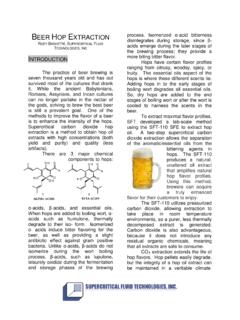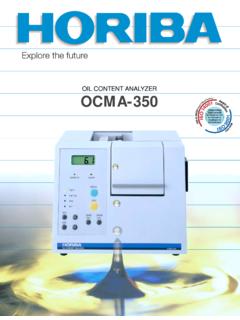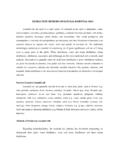Transcription of Selection of the Right Motor Oil-draft 17 - widman.biz
1 Selection of the Right Motor Oil for the Corvair and other Engines 12/03/2013 Page 1 of 33 Selection of the Right Motor Oil for the Corvair and other Engines By Richard Widman This is the seventeenth draft of this paper. It has been a year since I made any revisions. A reader donated a can of oil from the late 60 s for me to have analyzed, so after reviewing the results from the lab, I can now state what was really in the oils of the 60 s. Since this paper is still being downloaded at a rate of 5,000 times a month, I decided to add these comments and sources.
2 I have not gone back and reviewed available oils from different brands. I m sure there will be additional questions that will arise or points that I haven t explained to the satisfaction of some readers. Please send your questions or suggestions to and I will answer them in the next draft. Introduction My object in this paper is to explain in common language how to protect your engine through the Selection of the correct oil. In this explanation I will be summarizing various SAE Technical Papers with the information pertinent to this discussion.
3 For those that are only interested in the short answer, you can jump to the summary. I will not tell you which brand to buy, but what to look for on the label. I will not repeat word for word what is in the pages of the American Petroleum Institute, but put it in the best layman s terms I can think of. Some people will say that there are not enough graphs and charts; while others will say it is overkill. I hope to strike a balance. Many questions have been raised about the wear on flat tappet valve trains and other parts of these engines by the reduction of ZDDP in the newer oils (API SN, SM and CJ-4) and the desire to add commercial additives to increase those levels.
4 Here we will investigate the advantages and disadvantages of these oils and additives. History In the 1960 s when the Corvair engines were produced, there was basically only one commercially available type of base oil and very little in the way of classification of oil quality. Through the years the American Petroleum Institute (API) in cooperation with the engine manufacturers, oil companies, and car/truck makers have established norms for base oil classification and additive types, levels and effectiveness.
5 When the current API classification system was developed it classified the oils of 1960 as SB for gasoline and CC for Diesel engine oils. The higher quality oils of the time, recommended by the Corvair Maintenance Manual, were classified API Service MS or API Service DG . The MS oils were similar to what is known today as API SC up until 1968 when improvements were made. These were later classified as SD for gasoline engines. The DG oils were similar to what is known today as API CA for diesel engines.
6 At some point in time some oil companies came out with an additive containing additional anti-wear ingredients. Some oil companies began to sell oils with these products included and called them supplement 1 oils or HD oils. GM was a pioneer in raising the phosphorous level of oils from 200 ppm to 800 ppm for certain high horsepower engines with flat tappets in the 50 s and 60 s. I imagine that their additive was designed to raise the level from 200 ppm to 800 ppm, but I was too young at that time to investigate that.
7 Thanks to a reader of this paper who sent me a can of oil from the late 60 s, I have now had a sample of MM-MS-DG quality oil analyzed. After the brand name they have the word plus on the label, which might indicate it was their premium product. The results show that the Zinc was Selection of the Right Motor Oil for the Corvair and other Engines 12/03/2013 Page 2 of 33 517 ppm and there was 482 ppm of phosphorous (slightly more than half the level of today s SN oils and less than 30% of the level of a CI-4 oil).
8 It also had 807 ppm of Calcium as a detergent and 124 ppm of barium as a demulsifier (which is contrary to current oil production, since it would cause the moisture in the oil to settle out and cause rust in low places instead of evaporate in hot places. The base oils used in those oils were fractionally distilled petroleum products using solvents to extract what they could of impurities and wax (paraffin). Today these base oils would be called API group I . There were different extraction processes used to filter out or extract the paraffin from the oil, resulting in different wax contents in different oils.)
9 There was no classification of these base oils, and some had much higher molecular saturation than others, resulting in less evaporation and deposits, while others had high aromatic content and therefore higher acid formation, evaporation and oxidation. Some had too much wax and obtained a reputation of filling the engine with waxy compounds. In general the Pennsylvania base stocks had less aromatics and produced better products. Today those oils are divided in two sub-categories within the group I category based on their aromatic content.
10 Additive Levels The basic additive package for Motor oils designed to reduce wear (anti-wear) is a combination of zinc and phosphorous that is commonly called ZDDP. This is combined with Calcium or Magnesium for cleanliness and anti-acid. This part of the package is referred to as Detergent/Dispersant . These additives are polar. That means that one end of each molecule tries to adhere to the metallic surfaces of the engine to keep it clean or keep it from wearing during periods of contact while the other end is saturated with oil.










